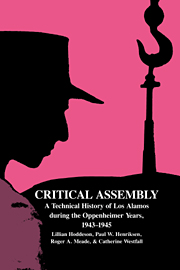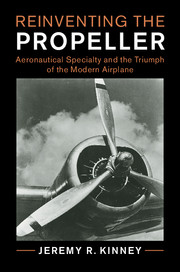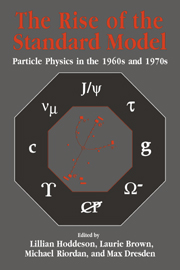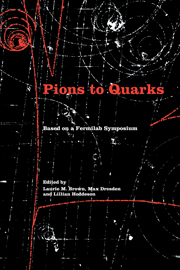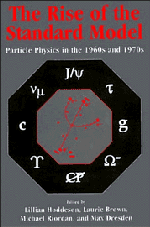Critical Assembly
This 1993 volume is a lucid and accurate history of the technical research that led to the first atomic bombs. The authors explore how the 'critical assembly' of scientists, engineers and military personnel at Los Alamos, responding to wartime deadlines, collaborated to create a new approach to large-scale research. The book opens with an introduction laying out major themes. After a synopsis of the prehistory of the bomb project, from the discovery of nuclear fission to the start of the Manhattan Engineer District, and an overview of the early materials programme, the book examines the establishment of the Los Alamos Laboratory, the implosion and gun assembly programmes, nuclear physics research, chemistry and metallurgy, explosives, uranium and plutonium development, confirmation of spontaneous fission in pile-produced plutonium, the thermonuclear bomb, critical assemblies, the Trinity test, and delivery of the combat weapons. Readers interested in history of science will find this volume a crucial resource for understanding the underpinnings of contemporary science and technology.
- A crucial resource for understanding the underpinnings of contemporary science and technology
- Will be of interest to scientists, engineers and liberal arts scholars (especially historians and sociologists of science)
Reviews & endorsements
"This book fulfills its declared intention of providing an unprecedentedly full picture of all the actions and processes that were involved in bringing the bombs into existence." A. P. French, Nature
"Generally the presentation is clear and shows the care one expects of the four distinguished authors....The presentation can easily be followed by a scientific reader, and a non-scientist will get an interesting impression of the events." Rudolf Peierls, Science
"...provides detailed discussion of the many experiments that made up the project, including the implosion and gun assembly programs and the interesting consequences of spontaneous fission in reactor-produced plutonium and continues with details of the Trinity test and the actual dropping of the bombs at Hiroshima and Nagasaki. Recommended as an important addition to any college or university library." Choice
"...draw[s] upon a full lode of primary data and explore[s] for the first time the methodology by which researchers at Los Alamos succeeded in their wartime mission. The authors successfully avoid the "official history" pitfall by focusing on individual contributions to scientific and technological advances as opposed to the usual summary of divisional achievements...a well-documented, concise, chronological review of the combination of nuclear physics, chemistry and metallurgy that produced the first fission weapons...also examines the impact of Los Alamos upon the methodology of "big science" at national laboratories in the postwar era." Peter Neushal, Physics Today
"...this is the most technical account of Los Alamos's war years to appear in print...it considers Project Y's significant success in the use of 'big science' methodology....Critical Assembly is a masterful piece of technical writing accomplished by four authors in conjunction with six scientific advisors and editors....essential reading for technically-minded scholars interested in the history of Los Alamos, atomic research, and the development of modern research labs...." Richard Melzer, Western Historical Quarterly
"Critical Assembly has a lot to say about proliferation, much of it relevant to the present. Among other things, it provides a better foundation than ever for evaluating the problems facing countries (or terrorists) with nuclear ambitions." William Sweet, The Sciences
"...an indispensable book...." Barton C. Hacker, American Historical Review
"The book has the great merit of illustrating the depth and breadth of the scientific and technical problems faced by scientists in the laboratory at Los Alamos, New Mexico...This is an important book, for its insight into the enormously complex activities at Los alamos and, even more for its tantalizing survey of the implications of that research and development." Lawrence Badash, Journal of American History
"...the book certainly does bring together a lot of information that fleshes out the story." New Scientist
"...a notable and richly detailed work....Critical assembly sets a new standard for writings on wartime Los Alamos." Canadian Review of American Studies
Product details
February 2004Paperback
9780521541176
528 pages
232 × 163 × 33 mm
0.79kg
82 b/w illus.
Available
Table of Contents
- 1. Introduction
- 2. Early research on fission, and overview:
- 1933–43
- 3. The early materials program:
- 1933–43
- 4. Setting up project Y: June 1942 to March 1943
- 5. Research in the first months of project Y: April to September 1943
- 6. Creating a wartime community: September 1943 to August 1944
- 7. The gun weapon: September 1943 to August 1944
- 8. The implosion program accelerates: September 1943 to July 1944
- 9. New hopes for the implosion weapon: September 1943 to July 1944
- 10. The nuclear properties of a fission weapon: September 1943 to July 1944
- 11. Uranium and plutonium: early 1943 to August 1944
- 12. The discovery of spontaneous fission in plutonium and the reorganisation of Los Alamos
- 13. Building the uranium bomb: August 1944 to July 1945
- 14. Exploring the plutonium implosion weapon: August 1944 to February 1945
- 15. Finding the implosion design: August 1944 to February 1945
- 16. Building the implosion gadget: March 1945 to July 1945
- 17. Critical assemblies and nuclear physics: August 1944 to July 1945
- 18. The test at Trinity: January 1944 to July 1945
- 19. Delivery: June 1943 to August 1945
- 20. The legacy of Los Alamos.

